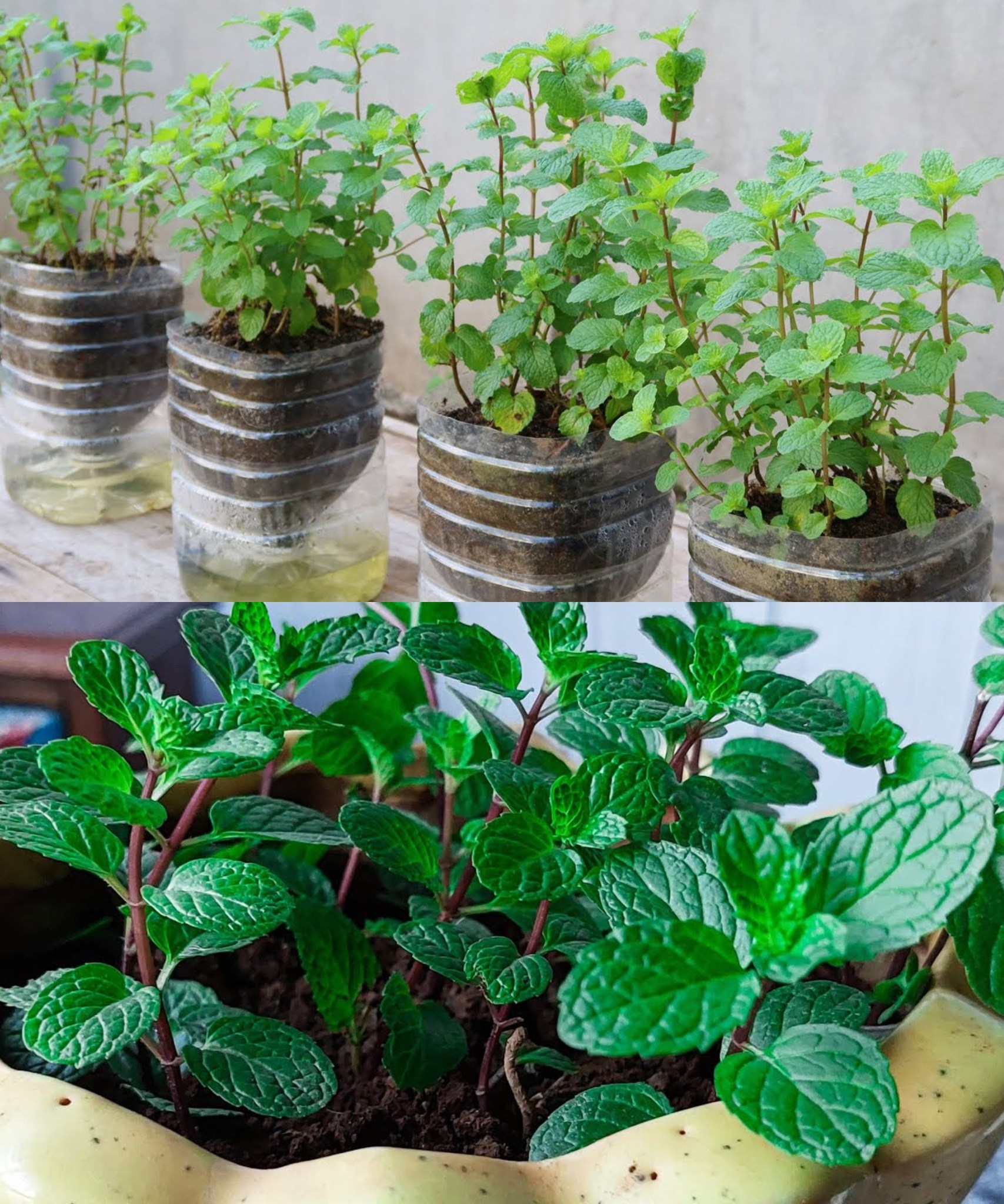
A mint plant is an essential addition to your balcony’s collection of aromatic herbs, known for its delightful fragrance. Let’s explore how to cultivate a thriving and healthy mint plant and, importantly, how to propagate it with success.
When considering adding a mint plant to your balcony, you have the option to start from seeds or to purchase a young plant. If you prefer immediate results and lack the patience for germination, go for the latter. Once you bring your mint plant home, take it out of its pot and you’ll notice a dense network of roots. Carefully tease them apart for proper replanting. Prepare one or more pots by laying a base of gravel for drainage, followed by a layer of all-purpose potting soil. Now, your pots are set for transplanting!
Mint is a perennial herb that is part of the Lamiaceae family, commonly found in the Mediterranean region and is quite easy to cultivate. For the best yield of aromatic leaves, plant your mint during the spring, and you can look forward to harvesting your first leaves in the summer.
How to grow mint
Firstly, it’s useful to note that the most common type of mint available is peppermint, which is known for its strong, refreshing scent. Mint can be propagated in a couple of ways, either from seeds or cuttings. Here’s how you can do it:
From seed: Should you choose to grow mint from seeds, once you’ve sown them, you’ll need to lightly cover the seeds with a thin layer of soil. A gentle dusting is all that’s required. It’s important to keep the soil consistently moist. Continue to do so until the first sprouts emerge.
From cuttings: Propagating mint from cuttings is remarkably straightforward. How do you go about it? Simply snip a 5-10 cm long stem from an established mint plant. Strip the leaves from the bottom portion of the stem and insert the cutting into a pot filled with moist soil. Maintain the soil’s moisture to encourage root development.
Where to place the mint plant
Keep in mind that mint thrives best in shaded areas, though it can tolerate a bit of sunlight from time to time. For proper pruning, consistently trim the top part of the plant to prevent it from becoming overly tall. Ensure that you water the mint regularly, keeping the soil moist at all times. Here’s a tip: during rain, snow, or hail, it’s wise to protect your mint plant with a cover that is breathable. This precaution helps to keep the leaves dry and prevents damage.
How to care for the mint plant
Beyond adhering to the guidelines regarding the amount of light your mint plant should receive, it’s important to water it consistently without over-saturating the soil. Ensure that the pot or garden soil where the mint is planted has adequate drainage to prevent water from pooling, as this can harm the roots. Regularly clear away any dry leaves to facilitate unimpeded growth. Lastly, during the growing season, feed your mint plant with a balanced fertilizer every 4-6 weeks to support its development.
When to harvest mint
In truth, you can pick mint leaves at any point, but the best time to harvest is just before the plant flowers, when the leaves have reached their fullest size and are bursting with flavor and fragrance. Keep in mind that mint is a fast grower, allowing you to gather leaves every 2-4 weeks.
How to use mint
Mint leaves are incredibly versatile and can be used in a variety of ways. Let’s explore some of their popular applications:
– As a refreshing addition to fruit salads, mint can enhance the overall flavor of the dish.
– Extracted as essential oils, which are often used in perfumery.
– Incorporated into sauces for a burst of freshness.
– Blended into ice creams for a cool, minty twist.
– Steeped to create soothing infusions and teas.
– Mixed into drinks for a fresh, invigorating taste.
– Used as a fragrant garnish or ingredient in desserts.
